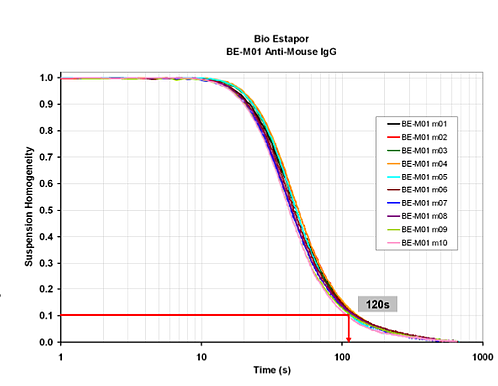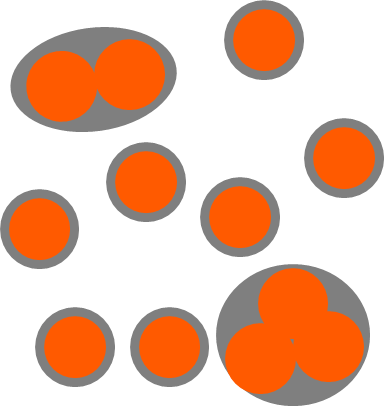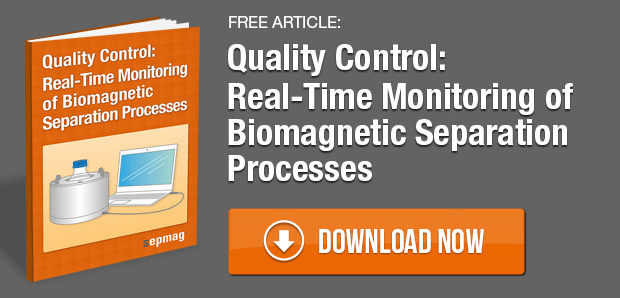When manufacturing CLIA IVD-kits, one of the main problems during the successive steps (coating, washing...) is the formation of irreversible aggregates, usually due to the excessive magnetic retention force during the separation process. If the magnetic beads are not well re-suspended, clumps are formed and not all the surface is exposed. This leads to inhomogeneity in the coating if the problem appears in earlier manufacturing steps or in larger variability on the reagent reactivity if it happens in the latest. Clumps are also a big problem in magnetic beads analytical uses, as protein purification for screening, or any other application where the final product need to be aliquot in small volumes.
As discussed in previous eBooks, the first action should always be minimizing the risk of irreversible aggregation by using the right magnetic retention force. To avoid trade-offs between losses (or long separation time) and clumps formation, homogenous biomagnetic separation conditions is the best options, as it will increase the force far from the retention area –thus accelerating separation- without need of excessively high values at it.
However, even if the problem is theoretically eliminated by using advanced Biomagnetic separation systems, the existence or not of ‘clumps’ should be experimentally verified. The classical way is to check the RLU (Relative Luminescence Units) variability of the test after finishing all the manufacturing steps. The already discussed alternative (or complementary) way is to monitor each biomagnetic separation step by itself.
If you want to know everything about monitoring biomagnetic separation processes in real time, download our free guide about this topic:
Validation of re-suspension protocols with monitoring tools
The biomagnetic separation monitoring tools can been used to validate re-suspension protocols. One example is the experiment we did to show that small diameter Anti-mouse IgG magnetic beads can be used with SEPMAG® Biomagnetic Separation Systems without the need of any sonication step. Avoiding the use of ultrasound is key to simplify the scaling up of the process beyond the milliliters volume.
To check if the protocol generates clumps, the same suspension was separated, then re-suspended just by agitation, and then separated again, up to a total of 10 separation/suspension cycles. The SEPMAG® had a carefully chosen homogenous magnetic force which makes the separation fast, and simultaneously claims that the value is gentle enough to avoid clump formation. The recorded optical curve does not show changes. The monitoring process demonstrated the feasibility of the re-suspension protocol without the sonication method for this magnetic beads and magnetic separation rack.

This experiment was important because the re-suspension problem is one of the biggest problems when manufacturing needs large batch volumes. When the vessels have more than a few milliliters, the use of sonication is complex as it is necessary to use probes to transmit the ultrasound energy to the suspension. Besides the risk of contamination, the repeatability of the process becomes complicated, making it necessary to double check if the clumps appear.
Monitoring the whole biomagnetic process provides the data necessary, not only for Quality Control, but also for success product and protocol development.
Related posts:





